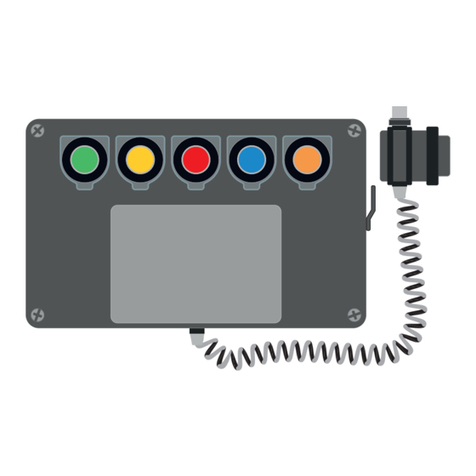
1
1
1
1
1
1
1
1
1
1
1
1
1
1
1
1
1
1
1
1
1
1
1
1
1
1
1
1
1
1
8
SONIXTM Hmi-26 Technical Manual
SONIX HMI26 TECHNICAL MANUAL TM375 / A June 2022 www.eaton.com
2 Introduction
These instructions are intended for all users who have
to install, commission, congure and setup the Sonix
Hmi 26 access panel. For this, the manual is action-
oriented and explains how to achieve a certain objective
on a step-by-step basis. It is assumed that you have
necessary electrical, electronic and telecommunications
experience to undertake the work. If in doubt, please
consult your Eaton representative.
2 2.1 Eaton quality assurance
Eaton design, manufacture, install and commissions all
our products to the highest standards of quality. This
quality process is embraced and adopted throughout the
group in all areas of our operations. This is demonstrated
by our compliance and strict adherence to ISO 9001,
14001, ATEX, IECEX policies. On receipt of the product,
ensure that the cartons are undamaged and that the
contents are all correct and complete. Should this
product reach you in an unsatisfactory condition please
report this to Eaton to enable us to rectify and investigate
the fault in a speedy manner.
2.2 Packaging
The Sonix PA/GA system is designed around a highly
secure & exible architecture, that removes the need for
lengthy engineering cycles, bespoke and costly software,
custom eld engineering or expensive onsite support.
This results in a highly effective and exible
communications solution for the next generation.
The Sonix system has been rigorously designed for
installation in both safe area or potentially explosive
environments, using latest protection philosophies
including EExe, d, i, m and p to ensure the highest levels
of safety whilst increasing operational features.
The Sonix PA/GA System is designed to meet and
surpass the requirements of ATEX, IECEx, DNV, BV,
ABS, IMO and PFEER, with other regional certications
pending.
Please refer to Sonix system technical manual for any
further information
2.3 ESD (Electro Static Discharge)
The Sonix PA/GA system is largely constructed from
electronic printed circuit boards. These printed circuit
boards are sensitive to static electricity, ESD discharge
on to any of the Eaton products could cause permanent
and irreparable damage to the equipment. All such PCB’s
are shipped to you in ESD protective bags for transit.
Prior to opening the transit bags please ensure that you
are wearing either an ESD, earthed wrist strap or other
suitable means of protection.
2.4 Safe working practice
Whilst working on or within the Sonix PA/GA system it
is our prime interest that you remain safe throughout.
During this work you may be exposed to potentially
hazardous voltages, currents, conned spaces and
potentially industrial environments.
Prior to undertaking any work please ensure relevant
permits and regulations are adhered to.
2.5 Required tools
To install and commission this part you will need the
following tools.
• Flat-blade terminal screw driver
• Small Flat-blade terminal screw driver up to 2.5 mm
• Multi-meter
2.5 Required tools
This item is shipped with the following items.
• 1 x Hmi 26 access panel
• 1 x desk mount console back box*
• 1 x Product Manual
*if ordered with console back box option.
2.7 Recommended spares
This item is sold as a complete module; therefore no
spares are necessary.




























